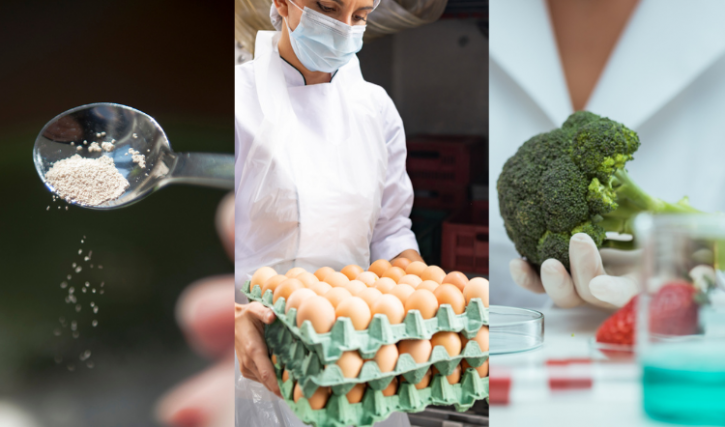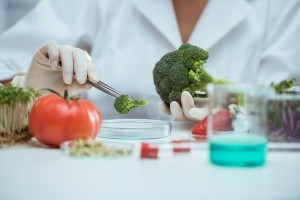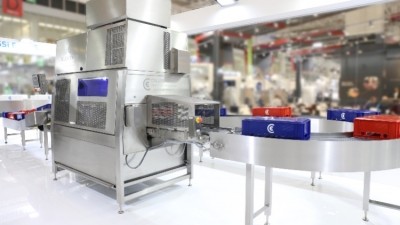Feature
Enzymes and yeast: More than just raising dough

Food manufacture explores the novel new ways in which yeast has been used to accelerate the production of new plant-based meat analogues, as well as other developments in enzymes in the industry that are looking to shape the functional ingredients of the future.
Look to the yeast
The most notable use of enzymes in the food and drink industry is arguably their role in fermentation, particularly when yeast is involved. Long used as the catalyst for making anything from beer to bread, yeast has come into its own in the past few years as a key component of plant-based meat analogues.
Yeast-based ingredients will often have an umami flavour that can help give plant-based proteins a more ‘meaty’ taste and have the added benefit of being 100% animal free and – depending on how it was processed – is clean label.
One such ingredient is Yusto from French-based ingredients and feed firm Arbiom. One of several developments in the field of fermentation from the company, Yusto boasts of its sustainability and well-being credentials alongside its ability to enhance flavours and mask imperfections – such as bitterness and vegetal flaws – often pronounced in plant-based meat analogues.
Lucile Ducouret, marketing and communication manager for Arbiom, told Food Manufacture that the ingredient can serve as a substitute for salt in a product, bringing it further in line with a growing trend of consumers searching for foods that improve their wellbeing.
“Research also proved its high content of functional fibres has benefits for digestion and intestinal microbiota,” she continued.
“With Yusto, yeast-based ingredients are an excellent alternative to traditional animal proteins as it is vegan, allergen friendly, non-GMO and clean label compliant. Moreover, it has a lower carbon footprint than other protein sources as it is created from sustainable carbon sources and produced locally in Europe.”
These yeast-based proteins developed by Arbiom have also made their way into spreads. Consumer test results in Germany and Sweden indicated that 70% of consumers liked the product made with Yusto and appreciated the fact it was high in protein – a claim reserved for products that contain protein content of more than 20%.
With the talk of yeast and fermentation as a vehicle for propelling plant-based meat alternatives to the top of the pack, you would be forgiven for thinking that traditional animal-based products could be going the way of the dodo. But for Arbiom, it’s not just humans that are eating their output.
Yeast fermentation is also being used to develop animal feed in partnership with Mowi, Aquascot and Waitrose. SylPro, another yeast-based protein ingredient, was used to develop a feed for salmon which was then processed and tested by UK consumers against fish fed a non SylPro diet.
“Two-thirds of the panel indicated they will likely buy filets from salmon fed a diet which included SylPro,” said Ducouret. “Results show that the inclusion of a yeast-based ingredient in aquafeeds does not significantly change the appearance, odour or aftertaste on both raw and cooked salmon and even enhances the strength of flavours of filets.
“Moreover, consumers prefer the mouthfeel of salmon fed with SylPro compared to standard salmon. It is then possible to appeal to more consumers to buy salmon filets when they are fed a diet which includes yeast-based ingredients.”
The versatility of yeast across the entire food chain continues to be proven by the likes of Arbiom. With interest in plant-based meat analogues continuing to grow, there’s no doubt it will be at the forefront of manufacturers minds when they look into adding their own offering to the table.
“European consumer perception for yeast-based protein foods within the project is very positive, from fish feed incorporation to the inclusion of SylPro in final food products,” Ducouret added.
“This predicts a great future forecast for the alternative protein market as more and more people are interested in sustainable foods. A study carried out by the Protéines France association showed that in 2022, one quarter of French people changed their food habits to include non-animal sources of proteins in their diets, slowly shifting towards a more sustainable and healthy food system.”
Lowering the number of ingredients
In the world of food production, the reduction of ingredients in a product is often fuelled by geopolitical pressures. Concerns about the growth of childhood obesity was a key driver of the raft of sugar reduction programmes in the UK, while the still ongoing fallout of Brexit and the war in Ukraine have both severely disrupted the supply of goods, pushed up prices and has led to incidents of ‘shrinkflation’ by some manufacturers.
Rising raw material costs can also lead manufacturers to become more creative in the way that they make food. Can a product use less ingredients and still come out with the same quality at the other end? Can a product even be made if some of the ingredients need to be reduced?

It was these concerns over the price of raw materials that led to ingredients manufacturer Kerry to explore the use of enzymes to reduce the number of eggs needed in a wide variety of baking applications.
According to statistics published in January 2023 by EuroStat, the price of eggs in the EU was 30% higher on average in January 2023 than in 2022, amid a steady rise in prices since January 2021. Supply-chain disruptions are the main reason for these cost increases, exacerbated by geopolitical instability, global widespread avian flu, drought and increasingly unpredictable/extreme weather conditions.
Kerry’s Biobake EgR is an enzyme solution that it claims can reduce the number of eggs needed by replacing 30% of the egg requirement while ‘matching traditional baking performance measures such as specific volume’.
Not only does it help cash strapped bakers looking to keep putting out the same volume of product, it also provides producers in the EU with an affordable way to transition away from caged eggs in their recipes. This would allow bakers to get ahead of the planned phasing out of caged hens by the European Commission by 2027.
Finding solutions to reduce carbon impact is an important sustainability consideration for manufacturers, driven increasingly by environmentally and ethically conscious consumers. Biobake EgR has been touted as a sustainable solution that eases the switch away from caged eggs while delivering potential CO2 emission savings of up to 14% when a 30%+ egg reduction is achieved.
Finish your greens for a healthier tummy
One of the biggest challenges with enzymes is to make sure that they survive the cooking process and make it into the gut and start providing the health benefits we seek. Vegetables take centre stage when discussing ways to get ‘the good stuff’ into our bodies while making them palatable.
Take broccoli for instance. Typically, one does not eat broccoli raw – the bitter taste and unappealing texture usually puts most people off the concept. But it is this bitter taste that is part of an enzymic process that is beneficial to the human body.
Healthy compounds are unleashed into the body with each bite, the result of a chemical reaction activated by physical damage to the vegetable. In cooking broccoli, we remove that bitter taste, but this also inactivates the enzyme involved in the reaction – myrosinase.
Luckily, the human gut microbiome has the potential to reactivate these dormant enzymes, making cooking broccoli – and other brassica vegetables – an appetising way to stock up on health promoting chemicals.
That being said, not all guts are created equal, with some people having a harder time digesting the vegetable than others - and ergo, not getting the benefits. However, new research from Scientists at the University of Illinois Urbana-Champaign could help change that.
Thanks to a grant from the US Department of Agriculture’s National Institute of Food and Agriculture, the team of researchers plan to identify which microbes maximise the benefits of broccoli and other brassica vegetables.
“Gut bacteria can metabolize glucosinolates in broccoli to isothiocyanates (ITCs), the bioactive compounds with known health benefits, but they can also break glucosinolates into other inactive materials that do nothing for us,” explained Michael Miller, principal investigator of the grant and professor in the Department of Food Science and Human Nutrition, part of the College of Agricultural, Consumer and Environmental Sciences.
“We’re focusing on the flux between these metabolic outcomes and how we can potentially steer that flux towards ITCs and away from the non-bioactive products.”
With their goal in place, Miller and his team set out to determine which bacteria are involved and how efficiently they produce ITCs versus non-beneficial compounds. To this end, the team has a study underway in mice where they are fed broccoli and kale, both cooked and uncooked, to understand the chemical and microbial dynamics of the system.
Once ITCs are unlocked – whether in the mouth or the gut – they trigger bitter-taste receptors in cell membranes, starting a series of reactions that produce hormones affecting glucose homeostasis and the perception of fullness.
“We actually have bitter taste receptors all the way down, not just in our mouths, but in our colon and small intestine, too,” Miller added. “The goal of our work is to show that the bitter compounds (ITCs) made by gut bacteria from metabolizing broccoli trigger bitter taste receptors in the gut and impact satiety, causing mice to eat less.”
Once the bacteria that maximise ITC production are identified, progress can be made on making custom probiotics that can help ‘level the playing field’ for people with lower efficiency microbial communities, as well as inform recommendations about whether raw or cooked broccoli might be useful for weight loss.


















